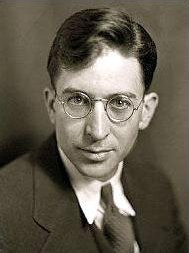
1906 - 1935
Carl Austin Weiss Sr.
Summary
Name:
Years Active:
1935Birth:
December 06, 1906Status:
DeceasedClass:
MurdererVictims:
1Method:
ShootingDeath:
September 08, 1935Nationality:
USA
1906 - 1935
Carl Austin Weiss Sr.
Summary: Murderer
Name:
Carl Austin Weiss Sr.Status:
DeceasedVictims:
1Method:
ShootingNationality:
USABirth:
December 06, 1906Death:
September 08, 1935Years Active:
1935bio
Carl Austin Weiss Sr. was born on December 6, 1906, in Baton Rouge, Louisiana. He was the son of Carl Adam Weiss, a physician, and Viola Maine. His father was a well-known ophthalmologist who had once treated a famous politician, Senator Huey Long. Carl's family background included German-Jewish descent from his father’s side, while his mother had French and Irish ancestry. Both of his parents were Roman Catholic, although there were questions about their Jewish heritage due to his grandfather's background.
Carl was educated in local schools and graduated from St. Vincent's Academy, a Catholic school. As a child, he took interest in electricity and mechanics. There was a notable incident where he tampered with the lock at their church, locking his mother and two aunts inside for a short period.
Initially, Carl studied engineering at university. His father had discouraged him from becoming a doctor because of the time demands required by the profession.This often made his father attend early morning mass in case of medical emergencies. After two years of engineering, Carl decided to switch his studies to medicine. He graduated with his bachelor’s degree in 1925 from Louisiana State University in Baton Rouge.
After completing his undergraduate studies, Carl pursued postgraduate work in Vienna, Austria, and practiced briefly in Paris at the American Hospital. He secured internships in Vienna and at Bellevue Hospital in New York City. During his time in Europe, Carl purchased a handgun that would later be connected to a significant event in his life.
In 1932, Weiss returned to Baton Rouge to join his father in private practice. In the following year, he became the president of the Louisiana Medical Society. He was also a member of the Kiwanis International.
murder story
On September 8, 1935, Carl Austin Weiss Sr. shot U.S. Senator Huey Long in the Louisiana State Capitol in Baton Rouge. The shooting occurred at around 9:20 p.m., shortly after a bill that affected Weiss's father-in-law's district was passed. Weiss approached Long and discharged a handgun from about four feet away. The bullet struck Long in the torso.
In response, Long's bodyguards, known as the "Cossacks," opened fire on Weiss. They shot him more than 60 times. Both Weiss and Long died that night, which led to controversy over the events. Because they both passed away before any trial or investigation could be conducted, no one could definitively prove that Weiss was responsible for Long's death. There were no autopsy results available for Long either, which further muddied the understanding of the incident.
In the aftermath, Weiss's family members denied that he was guilty. His wife and others close to him stated he had been happy earlier that day. Some individuals, including his son Carl Weiss Jr., later claimed in interviews that Long was likely killed by a stray bullet from one of his own bodyguards. Donald Pavy, Weiss's wife's cousin, investigated the shooting and also concluded that Weiss did not shoot Long. However, many scholars, including Professor T. Harry Williams, disputed these alternative theories, stating that eyewitness accounts connected Weiss to the shooting.
In 1991, Weiss's remains were exhumed for scientific examination. According to further studies, the disagreements about who was responsible for Long’s murder remained unresolved even after forensic analysis. The events surrounding Weiss's actions that night continue to be debated in history.